Creative Thinking: Solving Problems with Creative and Critical Thinking IBM Skills Network Team [Evidence Of Engagement and Short REFLECTION]
- ruthmarcelyne2022

- Nov 6, 2024
- 13 min read
Why this artefact was Included
After learning about the connection between critical and creative thinking I decided to take a short course to understand how this two thinking processes are interlinked in problem solving. Additionally, I wanted the tools on how to do this which this short course offered me.
Introduction
Why do you need to focus on solving problems?
Welcome to the course on solving problems with critical and creative thinking. People constantly deal with a wide range of problems in their lives and work. You need to solve problems whether they are internal or for a client, large or small, simple or complex. Learning better ways to solve problems can benefit your work and performance at your workplace. Given the agile way of working, you need to get over hurdles quickly and move on. In this course, you'll learn how you can solve problems using a five-step problem-solving process. You face different kinds of problems on a daily basis, some of which you can influence and resolve and some that you have no control over, which can be frustrating. This concept, which is widely known as the circle of concern and the circle of influence.
When faced with these two types of problems, it isn't the best use of your time to focus your attention on problems that fall outside your circle of influence. Things that you have no control over, such as traffic, the economy, or organizational changes. What does make sense is to focus on things that you can control.
Highly effective people prefer to focus their time and energy on issues where they can actually make a difference and we should do the same. In this course, you'll focus on work-related problems that you can influence, Control, and resolve with a view to helping you be more proactive and effective at work. Let's begin by exploring what kind of thinking would help you solve problems.
Critical and creative thinking are required to solve problems
Solving problems require a combination of critical and creative thinking. What are the differences between the two types of thinking?

Critical thinking involves convergent thinking and focuses on coming up with a single solution to a problem, while creative thinking involves divergent thinking and generates many creative ideas by exploring several possible solutions. Together, they give you powerful ways to solve problems as effectively as possible.
Critical thinking means identifying and analyzing a problem, and then using facts and logic to evaluate ideas to decide which potential solution is likely to deliver the best outcome. This method applies convergent thinking, as we begin with pieces of information and converge around a solution.
Creative thinking means generating creative ideas by brainstorming potential ways to solve a problem. This method applies divergent thinking as we begin with a prompt or question and generate many solutions.
The problem-solving process
Here's the five step process that you can use to solve problems.

As you go through the steps, you'll also see how both creative and critical thinking come into play. The first step of the process is identify, in which you identify and clarify the problem. This is followed by the second step, analyze, in which you examine what's happening and why. Both these steps involve critical thinking. Critical thinking in this context involves using facts and logic to identify and analyze the problem. This is where you figure out what's going wrong and what you might do about it. As we move to the third step, the problem solving process shifts from critical thinking to creative thinking. The third step of the process is explore, in which you think of several possible ideas to arrive at a solution. Creative thinking in this context involves devising potential ways to solve the problem. As we move to the fourth step, the problem solving process shifts back to critical thinking. The fourth step of the process is select, in which you decide the best solution. And the final step of the five step process is implement, in which you put that solution into practice and define how you'll measure it's success. Now, working logically, rather than by intuition or guesswork, you'll decide which of the possible solutions will be most effective and then figure out how to put it to work. The five step process is a comprehensive approach to problem solving. It helps you to not only think through a problem and arrive at a suitable solution, but also gauge if a solution works.
How can you solve problems in an agile way?

Some approaches on solving problems in an agile way are listed here. They enable you to apply the three agile principles of beginning with clarity of outcome, listening, iterating, and course-correcting, and encouraging self-direction. You will see further linkages between the agile principles and the five-step process, and how it enables you to work out the best solution without getting stuck. Now let's look at the five topics of this course.
Topic 1: What's the Problem
Let’s begin with the first topic
To arrive at an effective solution, you have to first correctly identify the problem. While this might seem obvious, many people do not take the time and effort to do so. You'll find that problem solving is much more effective, if you begin with clarity and the right focus. Hence, it's important not to rush to the solution process. In this topic, you'll learn how you can gain clarity on the problem.
A problem might arise from a goal that’s difficult to achieve, and it might revolve around something that needs more attention. But it always has the potential of leading to a negative outcome. If there is no negative outcome, then it is not a problem. This is an important distinction, and it’s one of the first things to consider when you start to solve a problem.
The problem-solving process-Identify
The first step of the problem solving processes to identify the problem as precisely as possible. By answering the who, when, where and what questions, you'll understand the situation better. This is aligned with the agile principle of beginning, with clarity on the problem before you try to solve it. You'll then have to consider the present situation and evaluate how it differs from a more desirable situation. To begin, you'll need to come up with a concise description of the problem.
Write a problem statement
Writing a problem statement helps you to put together the key facts of the problem, and provide a concise, accurate description of the problem. To write a problem statement, you should include key information about the who, when, where, and what of the situation, and omit the situation's causes, such as why and how, and not predict solutions as it is too early in the process to begin identifying potential solutions. This Agile technique helps you to clearly articulate what you want to achieve.
Practice Quiz: What do you think?
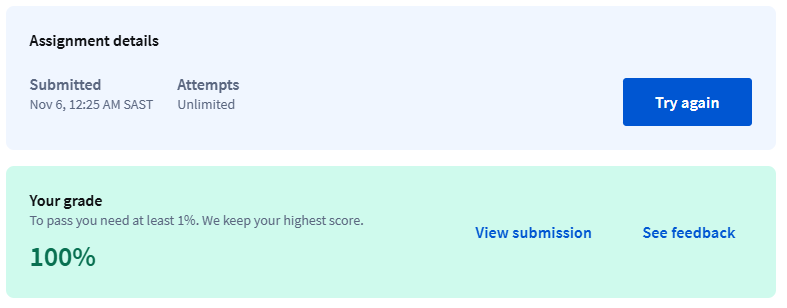

How do you find out if a problem is worth solving?
You saw how to arrive at a problem statement, but is every problem worth solving? A great way to determine whether a problem is worth solving is to simply ask this series of questions.
Topic 2: What's really going on?
Let’s move to the second topic
The most common mistake in problem-solving is jumping to a solution immediately after you realize you have a problem. That's where most people go wrong, because they try to put the solution at the beginning of the problem-solving process. But problem-solving works better if you wait until after you've fully investigated what is going on. To find the best solution, start with multiple ideas to solve the problem from which you can pick the one that might work best. How do you get to a point where you have several options to choose from? You examine the problem carefully, and then think of different ways to solve it.
You need to start by learning everything you can about the problem, gathering facts, so you can work with knowledge rather than supposition and interviewing stakeholders as well as teammates or collaborative partners. You should not assume that you understand a problem just because you defined it with a problem statement.
The problem-solving process: Analyze
To really understand a problem, you first need to find its root cause. If you fail to do so, you risk coming up with a solution that may not solve everything or anything at all. That's why the second step of the problem solving process is called analyze. In this step, you spend time learning more about the problem, try to view the problem not just from the perspective of those working to solve the problem. But also from the perspective of the stakeholders most affected by the problem. Do not make the mistake of assuming you know what is causing the problem without fully investigating at first. So how do you analyze the problem? One simple technique that's surprisingly effective is called the Five Why's.
How do you use “The 5 Whys”?
To use the five whys, simply ask why? After getting the answer to that question, ask why again? To dig deeper to the next level of the cause. Continue this process, digging deeper and deeper until you have reached the root of the problem. The five whys technique helps you pair the problem down until you're clear about what it is that you need to fix. This ensures that you begin with clarity before you work towards the solution.
Practice Quiz: What do you think?
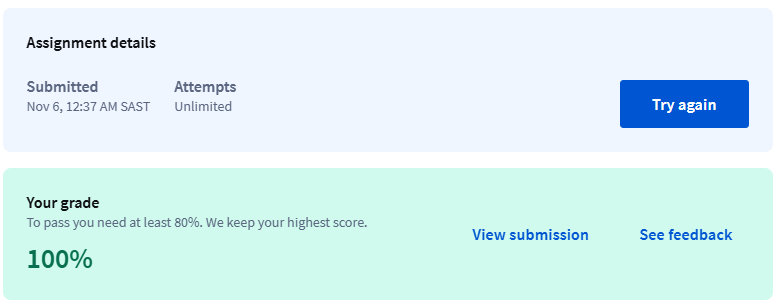
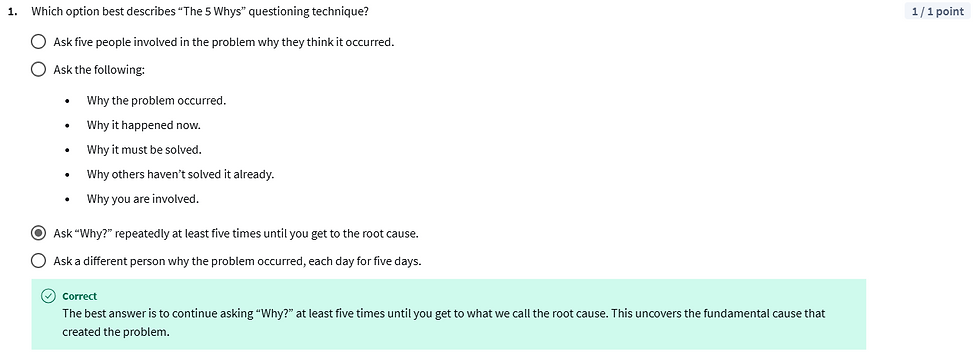
Practice Quiz: The “5 Whys” for Georgia

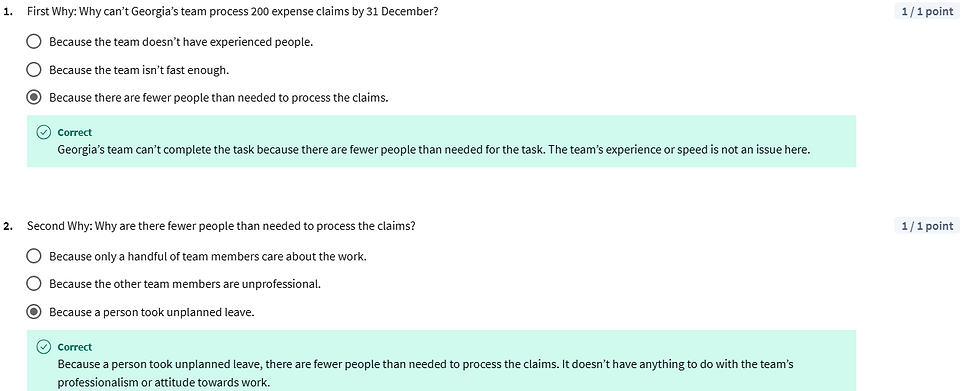
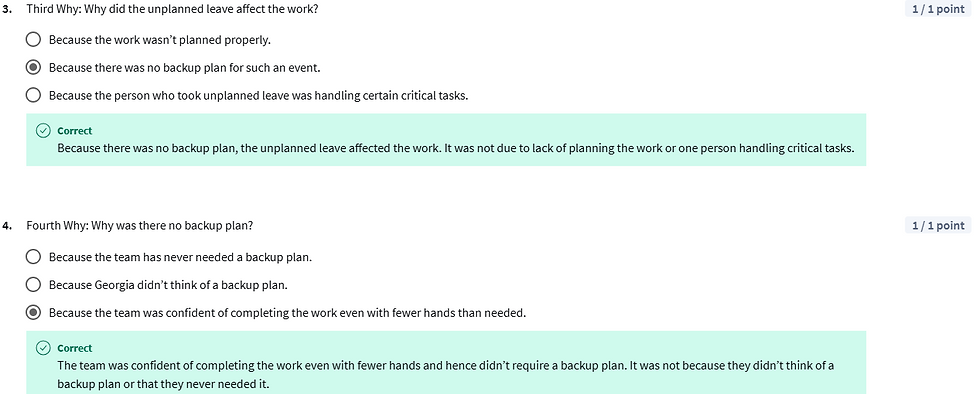

The root cause!
The number five is not a magical number, sometimes it takes four or six questions and sometimes you'll find more than one root cause. Just remember, the five whys is a highly effective way of sorting through a lot of information to determine the real flow of cause and effect.
Many tools can help with root cause analysis
Of course, the five whys is not the only way to identify the underlying causes of a problem. If you search the Internet for root cause analysis, you'll find many tools, some easy to use and some more complex. It doesn't matter which tool you use, as long as it helps you get to the root cause of the problem.
Topic 3: What are my options
Let’s move to the third topic
You've reached a stage where you need to think about how to solve the problem.
Should you stick to one best solution or mull over several possible solutions?
The problem-solving process: Explore
The third step is called explore, this is where we come up with several ideas to solve the problem. A common mistake that people make when solving problems is focusing only on one approach. Some mistakes are coming up with one idea and then stopping, not listening to ideas from other people. Killing good ideas too quickly because they sound strange, letting one person dominate discussions on the best solution, wanting every proposed idea to work perfectly right from the outset. One great way to ensure that you explore multiple options for solving the problem is to brainstorm, but it needs to be done well to be effective.
Brainstorm to get plenty of ideas
Brainstorming is an informal way to come up with ideas for solving a problem. It is quick and easy, and it works for problems that you need to solve quickly. Though it’s usually done in a group, you can also use it if you’re solving a problem by yourself.
Most of you would be familiar with the process but did you know that brainstorming can be ineffective when it’s limited to your area of expertise?
Brainstorming rules
At this point, creativity is more important than practicality. Your goal is to uncover as many approaches as possible. Later you'll worry about which ideas will work best. Right now, the more ideas you have to choose from, the better. In fact, go for diverse quantity. You can find ideas from surprising sources. When brainstorming, particularly if it is a complex problem, involve people who are not directly impacted by the problem. Such as people in different job roles, geographies or business units who might have experienced a similar problem. A change in perspective can lead to valuable new ideas. It's fine to build on other people's ideas and even take them off into new directions. The emphasis now is on being creative. It's not important who owns an idea or who gets credit for it. This is also a great place to demonstrate the agile principle of self direction. Take the lead to allow one idea to transform into another and then to transform again as many times as people find new ways to imagine it. Try combining ideas from different domains to form a new solution. Sometimes the most creative and effective solutions emerge from this process. This is sometimes difficult, but it's important to avoid killing an idea just because you see a problem with it. Instead, stay positive and come up with alternative versions. It's common for an idea that sounds absurd to inspire a second excellent idea a few minutes later. But that can't happen if there's a critic in the group whose crushing anything that's out of the ordinary or that doesn't work perfectly on the first try. Don't be that person, stay positive.
Though it's usually done in a group, you can try solving a problem by yourself. Look at the problem from different directions, not limiting yourself to just your own area of expertise. Here, you can see some ideas listed.
Topic 4: What is the best solution
Let’s move to the fourth topic
To choose the right solution, you'll often find yourself weighing several factors, including the solutions, cost, and effectiveness. What other important factors might be considered when selecting the best solution? Selecting the best solution depends on hard work and adherence to processes. Don't select a solution because it is easy or quick to implement. You have to look for a solution that's apt for the problem. How do you do that?
The problem-solving process: Select
The fourth step in the problem solving process is select. It involves going through a list of potential solutions and making an informed decision about the best solution. You will need to use critical thinking again to select the best solution as we require logic rather than invention to select and implement a solution. Your focus in this step should be to ensure that you select the solution that will lead to a positive outcome and achieve desired results. So how can you select the best solution with these?
The selection process can be made easy by answering three questions. What type of solution are you looking for? Who will help you make the decision? And which solution will you actually implement? Finding answers to these questions will help you demonstrate the agile principle of being self directed. Selecting the best solution will not be possible if you don't take ownership to identify the appropriate solution type. You also need to collaborate with others to identify who will select the solution. Let's look at each of the three questions in detail. Starting with the type of solution.

All possible solutions for a problem, whether good or bad will fall into one of these five categories. A corrective solution corrects or fixes the root cause of the problem, after which the problem disappears. It's highly desirable, but it's not always possible. An adaptive solution accommodates the problem. It's a work around that doesn't fix the root cause but reduces the impact of the problem. An interim solution is a make-do type of solution. It puts a temporary bandage of the problem. It can buy you time while you continue to search for something better. A contingent solution is a backup plan. You have it ready in advance in case the problem develops sometime in the future. A preventive solution is created before a problem occurs, but you don't just keep it ready, you implement it. So that the problem is prevented and will never occur.

Practice Quiz: Which type of solution will work for Georgia?



Use these factors to identify who should choose a solution
Making this decision involves balancing three factors; time, quality, and buy-in. The time factor indicates how soon an action needs to be taken. If there isn't much time available, do not involve a lot of people. Large groups often make decisions more slowly than small groups or individuals. The quality factor focuses on how completely the action must solve the problem. Remember, better solutions may require input from experts. The buy-in factor highlights the extent to which others need to commit to or buy into the solution. Consensus building yields the greatest buy-in, but it takes more time and can complicate an otherwise simple problem. Dealing with these factors is often a balancing act. You need to identify who should be involved in arriving at a solution based on each factor.
Practice Quiz: Who should choose the solution in each case?
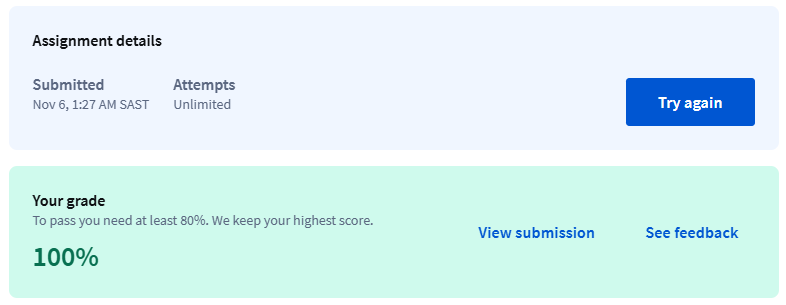
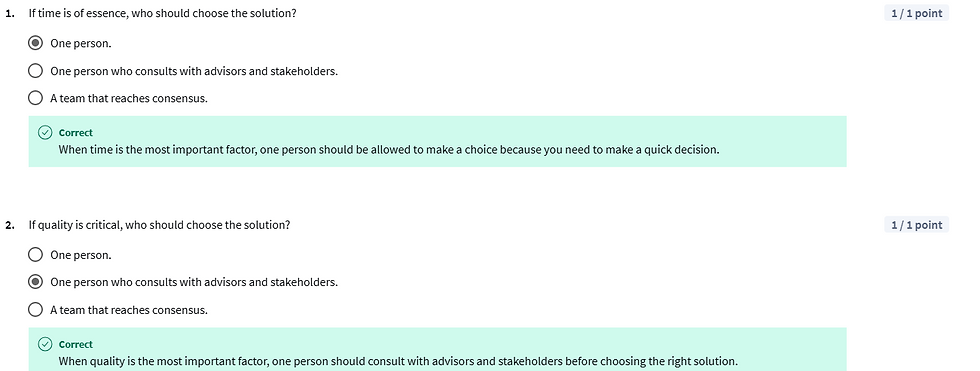

Practice Quiz: Who should choose a solution to Georgia’s problem?
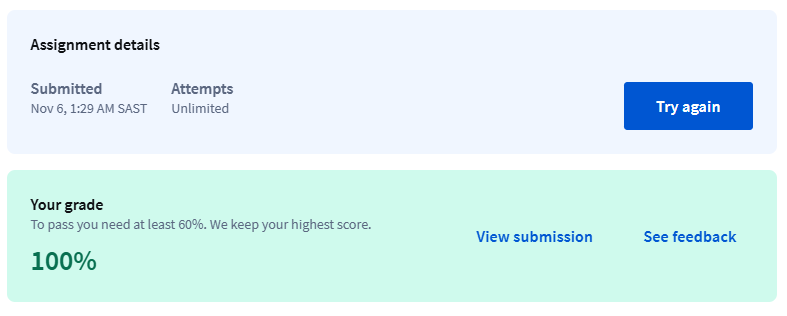

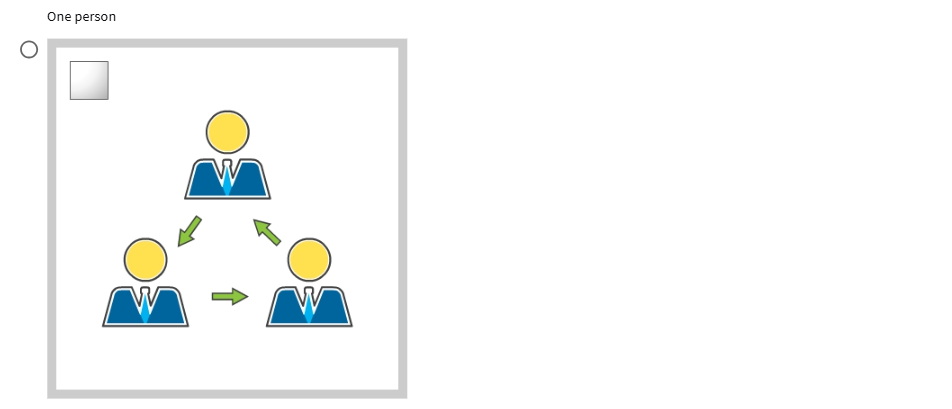
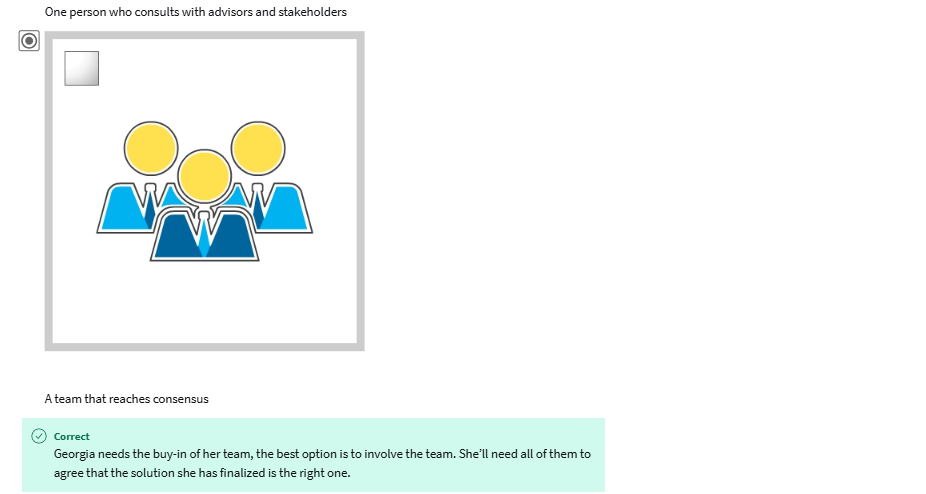
Use the Ease and effectiveness matrix to select the best solution
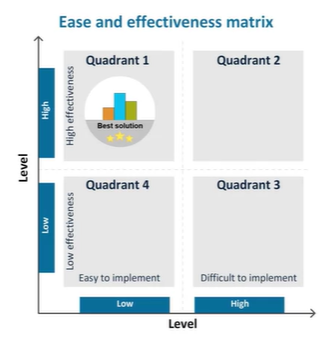
Once you have potential solutions in place, selecting the best one is not difficult. A good way to make this decision is by using the ease and effectiveness matrix. This matrix helps you decide what solutions you should prioritize and the ones you should avoid. If you want to make the most of your time and opportunities, the best solutions will be those situated in the high effectiveness and easy to implement quadrant.
Practice Quiz: Using the Ease and Effectiveness Matrix

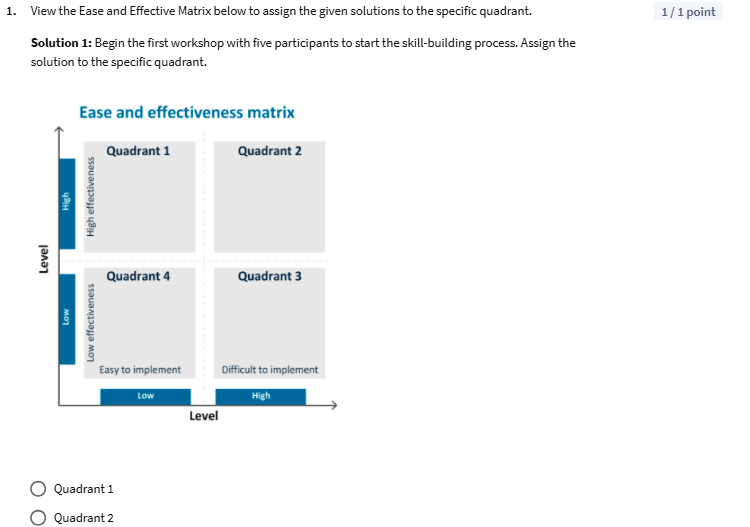


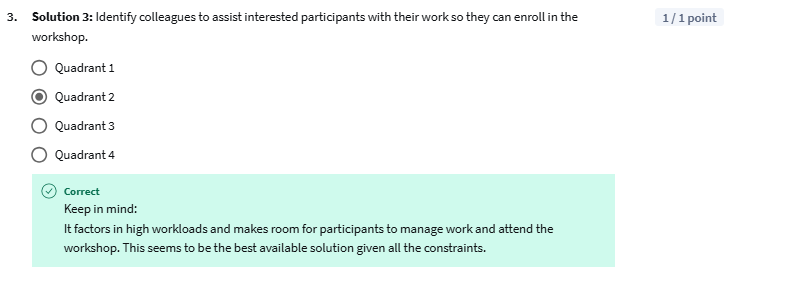

Practice Quiz: Let’s use the Ease and effectiveness matrix for Georgia’s problem

Topic 5: What will success look like?
Let’s move to the fifth topic
You've identified effective and easy to implement solutions, now there's only one thing left to do and that is implement your solution. The world is full of complexities, so even the best solution may not work perfectly.
What will success look like?
The final step of the problem-solving process is implement. When it comes to implementation, the best order in which we should do things might surprise you. Acting on the solution should not come first. Let's talk about what other action might come first instead.
Practice Quiz: What do you think success will look like?
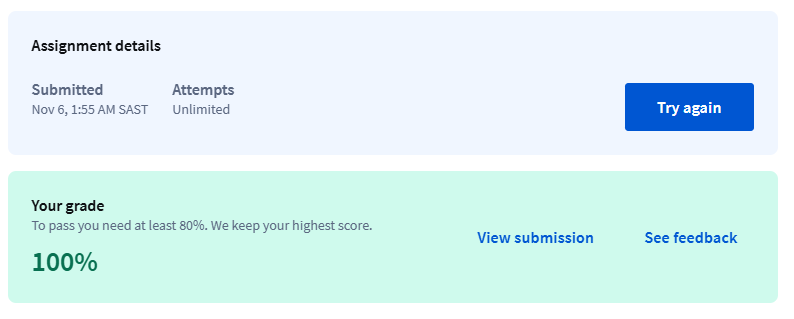

How will you measure a solution’s effectiveness?
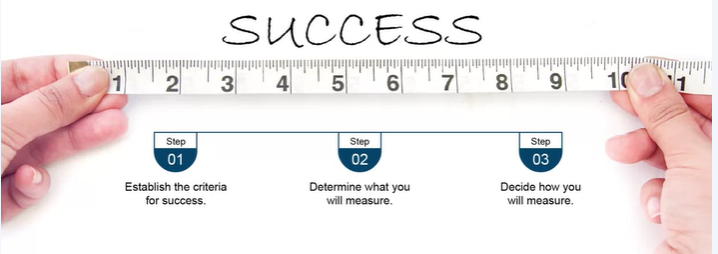
Here are three things that can help you measure any solution's effectiveness. Deciding what constitutes success, deciding what you will measure to gauge that success, and deciding how you will conduct that measurement.
Practice Quiz: What do you think?

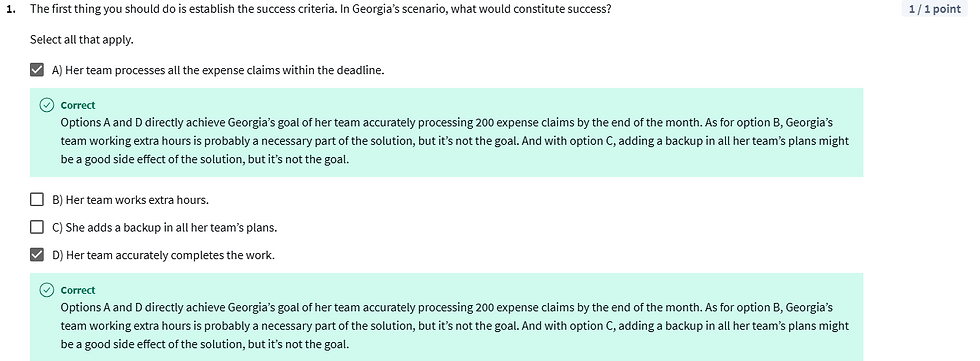

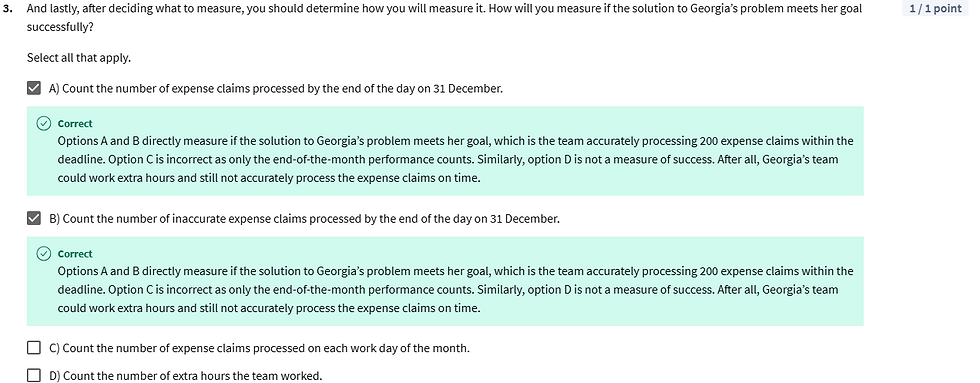
If you can’t measure it, you can’t manage it
If your solution involves things that cannot be measured, then you will not be able to determine if it is working. As you've seen, measuring the solution lets you know the extent to which your solution is really solving the problem. It also serves as an early warning system in case the solution doesn't meet expectations. Now, this is something to think about. What will you do if measurements indicate your solution is not working as well as you hoped it would. This is where you need to follow agile principles of working and adjust the solution to improve its results, improving a solution, choosing the next best solution and so on are not indicators that you've been unsuccessful. Instead, these are ways of being agile as opposed to waiting to identify the perfect solution. Be open to feedback, learn from it and adjust your course accordingly.
Build an implementation plan
You've decided how you will measure your solution, now, it's time to build an implementation plan. This plan will involve answering four questions, take a moment to review them. If you've correctly performed the previous steps of the problem solving process answering these questions should not be difficult, you just build a prioritized list of tasks to implement your solution. In the measurement part of your plan, be sure to include the following; your measurement steps, a step where you evaluate the results of the measurement and a step where you make changes to the solution if necessary.
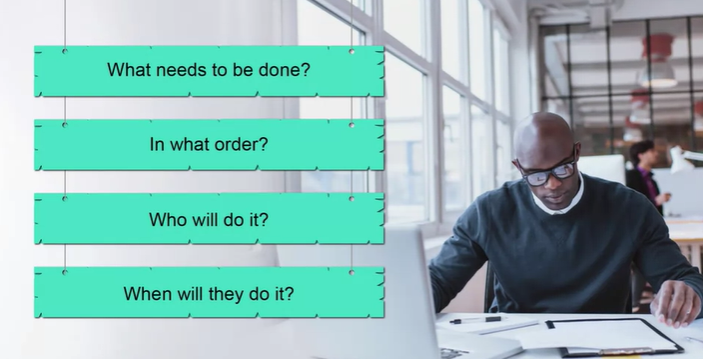
Course-end Assessment
Practice Quiz: Solving Problems with Critical and Creative Thinking





Graded Assignment: Graded Quiz: Solving Problems with Critical and Creative Thinking
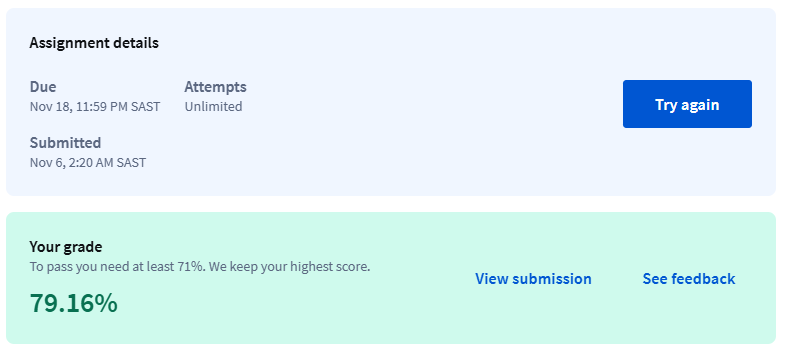
COURSE COMPLETED!

Short Reflection On Its Value
This short course helped me understand that critical thinking is part of the structural process of problem solving. It provides a logical and accurate way of finding the best solution. Creative thinking on the other hand is the way that innovative solutions are generated. Both are equally important in problem-solving.


![Creative Thinking: Critical, Reflective, Creative Thinking and Their Reflections on Academic Achievement [Journal Article - Reflection]](https://static.wixstatic.com/media/727c64_b7595514d0d2480d90c3b4a0778c0ac2~mv2.png/v1/fill/w_634,h_264,al_c,q_85,enc_avif,quality_auto/727c64_b7595514d0d2480d90c3b4a0778c0ac2~mv2.png)
Comments